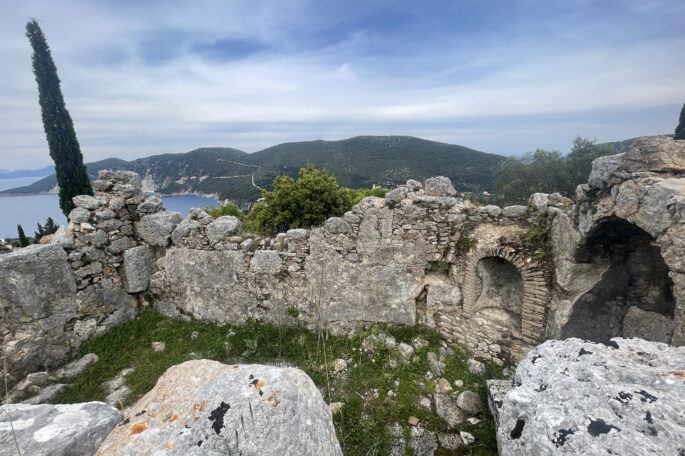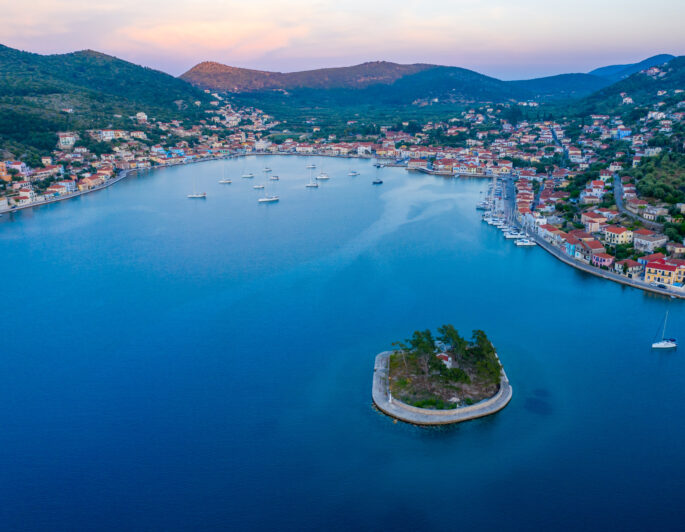
Ithaka—shrouded in myth and mystery, perched on the edges of memory and imagination—has captivated travelers, poets, and historians for millennia. To step onto this island is to enter a living palimpsest, where each olive grove, each craggy hill, holds echoes of Homer’s epic verses. But among its many layers of story, perhaps none is more beguiling than the question of Odysseus himself: Did the wandering king truly reign here? Can the ruins scattered across Ithaka’s hills offer us a glimpse into a world where myth and history entwine?
Archaeological digs in the north of the island, near the modern village of Stavros, have uncovered what many believe could be the remnants of a Mycenaean-era palace—perhaps even the very one that Odysseus returned to after his long and winding journey. As the debate over Homer’s Ithaka continues, scholars and locals alike turn to these ruins with reverence and curiosity, seeking to decode the island’s layered past. Walk in the footsteps of the mythic tales on our journey in October.
Homer’s Ithaka and the Palace Controversy
The so-called “School of Homer,” perched above the village of Stavros, is one of the most tantalizing archaeological sites on the island. Locals refer to it as the ruins of Odysseus and Penelope’s palace, and while definitive evidence is scarce, the site’s scale and structure suggest a significant settlement dating to the late Bronze Age. The idea that these ruins could be Homeric in nature has gained traction, particularly following excavations that intensified in 2010.
Some of the structures unearthed include stairways, courtyards, and multi-room buildings, features consistent with other Mycenaean palatial complexes on the mainland. For believers, these alignments offer more than coincidence—they are seen as a physical manifestation of Homer’s poetic memory, etched into the land itself. For skeptics, the identification is premature, relying too heavily on narrative rather than data. Yet the debate itself reflects the powerful cultural gravity of The Odyssey.
Whether fact or fiction, the site stirs the imagination. One cannot help but picture Odysseus returning in disguise, observing the suitors desecrating his home, or Penelope weaving and unweaving her loom in the quiet hope of reunion. The “palace” might be a symbol more than a certainty, but symbols, especially those grounded in place, have a peculiar staying power. They shape how we understand not only history, but ourselves.
Offerings in the Dark: Polis Cave and the Cult of Odysseus
Just downhill from the palace ruins lies the shadowed mouth of Polis Cave, a site steeped in both geological wonder and cultural devotion. For over eight centuries, this cave served as a ritual site where worshippers made offerings to Odysseus, long after his tale had passed from possible history into full-blown legend. The cave is more than a hollow in the rock; it is a shrine to memory, a place where myth was made material.

Among the most intriguing finds from the cave are fragments of bronze tripods—twelve in total—one inscribed with the words “EYXHN ODYCCEI,” or “a vow to Odysseus.” These votive offerings provide rare and powerful evidence of a historical cult of Odysseus, showing how the boundaries between hero, god, and ancestor often blurred in the ancient world. Such discoveries root the Homeric narrative in a lived cultural practice, one that persisted across generations.
For the modern visitor, Polis Cave is hauntingly quiet, filled with the sound of dripping water and the imagined echoes of ancient prayers. Whether we view these offerings as religious acts or literary homage, they serve as bridges between the intangible world of myth and the physical landscape of Ithaka. In this cave, storytelling was not merely entertainment—it was an act of reverence.
Memory in Stone: Museums and the Echoes of the Hero
While ruins and caves provide the setting, Ithaka’s small but vital museums serve as the archive of its ancient soul. The Archaeological Museum of Stavros, for instance, displays key artifacts uncovered from the nearby palace site and Polis Cave, offering tangible context to the legends that swirl around them. Bronze tools, ceramic fragments, and the remnants of ceremonial tripods form a patchwork of the island’s cultural tapestry.
These pieces may seem modest in scale, but their significance is immense. Among them are echoes of the so-called “Dark Ages” and the Geometric period, when oral traditions first began to be recorded in written form. Their presence here affirms the island’s deep participation in the currents of ancient Greek culture. They also remind us that history is not always grand or complete—sometimes it is a shard, a coin, a single name etched in bronze.
In Vathy, the island’s capital, the local Archaeological Museum expands the story further, showcasing Classical-era coins bearing the image of Odysseus himself. Here too is a wooden model of the legendary palace, a visual bridge between the imagined and the real. These museums don’t just preserve artifacts; they preserve longing—for knowledge, for connection, for the heroic age that Homer immortalized.
A View of Three Seas: Pilgrimage, Perspective, and the Poetics of Place
High above Ithaka, on the summit of Pilata Hill, a panoramic view unfolds that is said to encompass all three seas referenced in The Odyssey. This vantage point, with its sweeping vistas and mythic resonance, offers more than beauty—it offers a kind of revelation. From here, one can begin to grasp the poetic geography of Homer’s world, a landscape that exists as much in metaphor as in map.
To gaze from this height is to participate in a timeless act of perspective. In antiquity, sailors scanned these horizons in search of home or adventure; today, we look outward and inward, trying to reconcile the tales we’ve inherited with the truths we uncover. Pilata Hill becomes a stage for reflection—on myth, on memory, and on the enduring human desire for return.
Even the nearby Melanydros Fountain, flowing gently at the end of the day’s journey, adds to this sense of timelessness. Water, ever a symbol of life and transition, seems to whisper the lessons of Ithaka: that home is not merely a place, but a process of becoming. The landscape speaks, if we know how to listen. And in the listening, we find that Ithaka still holds secrets worth seeking.

As we trace the echoes of Odysseus across Ithaka’s windswept hills and hidden ruins, we are reminded that myth is not just a relic of the past but a living force—one that continues to shape our understanding of identity, home, and the heroic journey. The sites scattered across this island—from the palace ruins at Homer’s School to the offerings found in the shadowy depths of Polis Cave—invite us not only to consider the possibility of historical truth behind legend but also to reflect on our own inner odysseys. In unveiling the ancient secrets of Ithaka, we come face to face with timeless questions of belonging, memory, and transformation—questions that, like the journey itself, resist easy answers but reward those who are willing to seek them.
Join us on a unforgettable journey , where myth, memory, and place converge in breathtaking and unexpected ways. Walk in the footsteps of Odysseus, stand at the thresholds of legend, and rediscover what it means to come home—not just to a place, but to yourself. Our journey will be guided by Phil Cousineau who will lead many “Long Conversations” to spark your imagination and enable you to fully immerse yourself in this journey.

